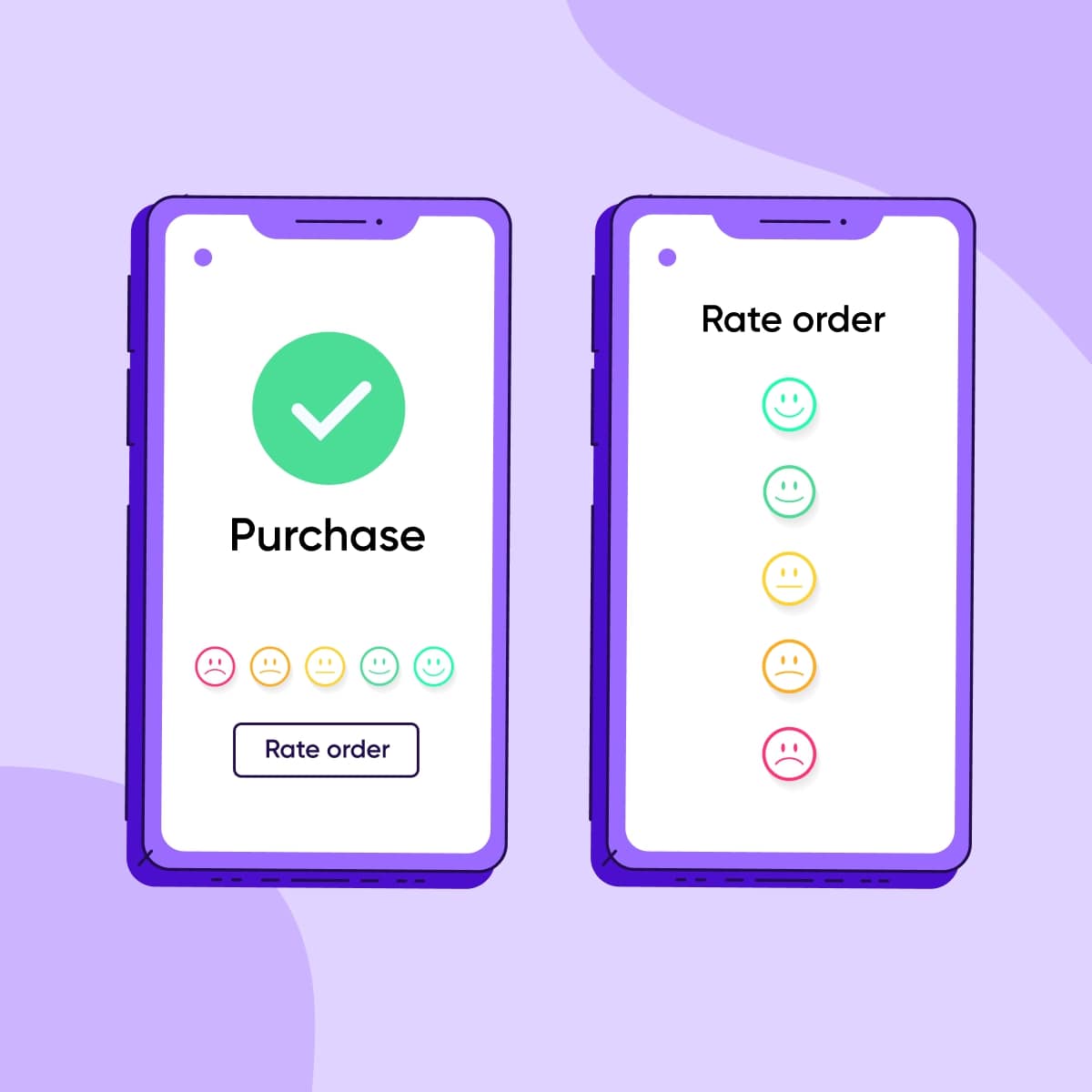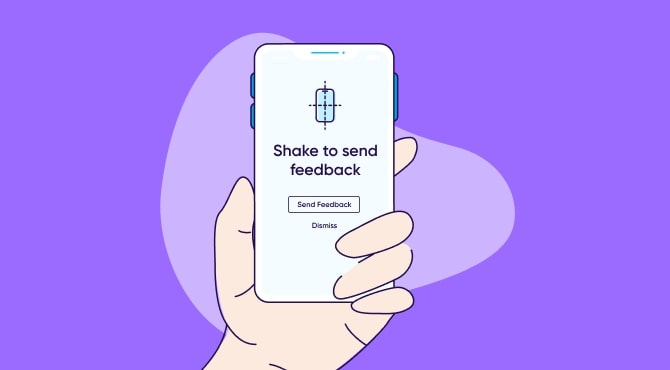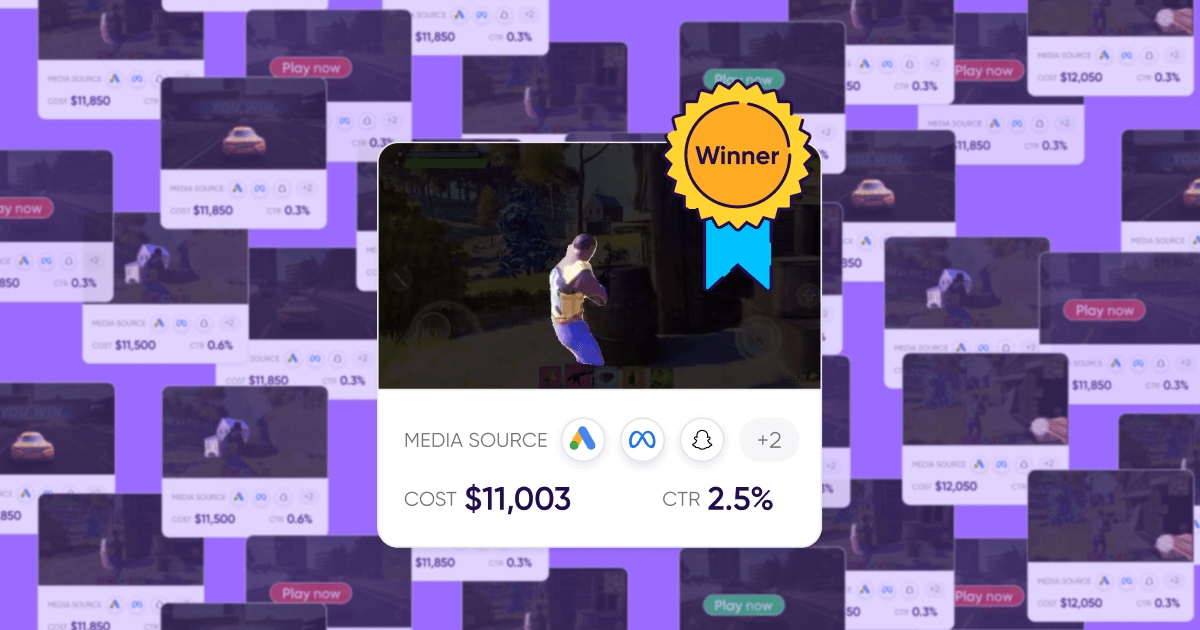
In-app feedback: Everything you need to know

Like people, products too evolve. But if it’s just yourself driving the evolution, the end product may not be the best version of itself.
8.9 million apps exist in the world today, and to stand out, you must apply your users’ feedback to be able to constantly tweak your app.
There are several ways of obtaining feedback from your users. This feedback might revolve around missing feature requests, user expectations, and satisfaction levels.
In hindsight, the input is prone to distortions. But if you’re asking for in-app feedback while the user is using your app, you get a more accurate version of your users’ experience and what they would like for you to improve.
What is in-app feedback anyway?
In-app feedback allows your users to share their views from within your app by giving you a rating, filling in a form, taking a survey, or leaving comments.
Evernote is an excellent example of a brand that collects in-app feedback from their users in real-time, allowing them to assess how their product is performing by asking the right questions in the form of a short survey.
Who is in-app feedback for?
The short answer is every stakeholder involved in app development. If you own an app or are working on creating one, you need to gather user feedback to properly gauge the usage and health of your product.
A successful app focuses on a user-first approach, and that requires knowing what users think of it. This is particularly important for user retention and reducing churn rates, which in turn will lead to word-of-mouth publicity and then better user acquisition (UA).
What are the applications of in-app feedback?
Let’s look at some of the digital applications that use in-app feedback tools.
1 – Native apps
These apps run on a specific operating system like iOS, Windows, and Android.
Whatsapp is a perfect example of a native app that offers separate interfaces for each operating system. Other examples of native apps include Twitter, Facebook, Pinterest, and Salesforce.
2 – Mobile websites
The mobile version of desktop websites that are supported on mobile devices.
Many websites do not invest in a separate mobile version, forcing users to access their desktop version on mobile, which offers a poor performance experience that’s far from being mobile-optimized.
Often, websites with mobile versions use in-app feedback tools to help improve their user experience (UX) on an ongoing basis.
3 – Native apps with a webview
These allow you to load web pages within a native app via an embeddable browser, which can be embedded into native apps through an iframe.
The advantage of using a webview is that you can reuse parts of your code for your native mobile app, as well as for your web-based app.
Importance of in-app feedback: Why should you collect it?

There are multiple reasons why collecting in-app feedback is essential to the growth and success of your product.
- You can fix reported bugs that might have escaped your internal testing.
- In-app feedback helps you evaluate actual user preferences in contrast to what you think users prefer.
- In-app feedback is time-independent and can be collected at any hour of the day — based on your users’ convenience.
- Collecting in-app feedback reduces reluctance on your user’s part. It’s right there in the app they’re using, saving them the hassle of heading to a separate platform to leave a review or comment.
- As opposed to sending out surveys and waiting for a reply, gathering in-app feedback offers a quicker response time.
The downsides of In-app feedback
Like all good things, in-app feedback also comes with its set of limitations. Let’s take a look at some of its not-so-great aspects.
- In-app feedback offers insight into how users feel about your product. However, it doesn’t tell you why users feel the way they do, and sometimes – context is everything.
- If deeply engaged within the app, some users might find a sudden in-app feedback request intrusive and might end up getting annoyed with the experience. So be sure to time your feedback requests well.
How to gather in-app feedback?
You can capture in-app feedback in multiple ways. A standalone method or a combination of methods can help you get the most optimized results, based on your type of product and needs.
In-app surveys
Surveys are an effective way of understanding user behavior, and an in-app survey is similar to a traditional survey, except it’s embedded inside your app. You can ask your users to fill in the required fields, and collect all the information you need about their app-related usage and preferences.
Provided your in-app surveys are short and don’t take up too much time, they’re much more likely to yield better response rates than traditional surveys.
App rating and review

The most common way of collecting in-app feedback is by asking users to rate your app. In addition to providing feedback to the app developers, ratings also tell other users what their fellow users think of your app and what to expect when using it.
App rating is a double-edged sword, in the sense of deterring potential users away if your ratings are low and the comments are not in your favor. But bear in mind that even low ratings could help you improve your product and potentially ramp up your game.
In-app net promoter score (NPS)

By asking your in-app users to give you a net promoter score, you can gain insight into how satisfied or dissatisfied they are with your app, and how urgent it is to work on improvements based on your cumulative score.
You have three user segments that assign you an NPS score:
- Promoters, who give you a good score
- Passives who give a score somewhere in the middle
- Detractors who give you a low score
In-app feedback tips and best practices
To ensure that you get the most out of in-app feedback with minimum inconvenience for your users, there are a few best practices to follow.
1 – Aggregate feedback from all sources
While in-app feedback is an effective way to get user feedback, don’t discount other sources like email surveys, user interviews, and comments on social media and online forums.
Try and get a holistic picture by collating feedback from all of these resources and acting upon them based on priority and urgency.
2 – Create better-directed questions
Sometimes, if you ask users to simply enter feedback without a clear direction, you may end up with a lot of invaluable and useless information that’s not likely to be actionable. Instead, be sure to ask better-directed questions, which will allow you to obtain more information.
3 – Don’t compromise on the overall user experience
User experience is the most important aspect of any app usage. If you annoy your users with too much in-app communication, you might end up losing them to a competitor.
So it’s important to find the sweet spot between a pleasant, engaging user experience and getting the feedback you need to make your app better.
4 – Wait long enough for users to have an opinion
Imagine that you’ve just bought a shampoo from the supermarket, and the brand manager comes and asks you for feedback before you’ve even used it. What if you used the shampoo once or twice? Are you in a position to provide feedback now?
At this stage, you probably haven’t had enough time to actually notice a difference. Similar to the shampoo in this example, you must give your users long enough to use your application and form an opinion, so the feedback you receive is meaningful and not half-baked.
5 – Target the right users
Not all users will be able to give you valuable feedback. For example, if you have an over-the-top (OTT) platform like Netflix, wanting to know how new shows in the comedy genre are performing, you need to take into consideration that viewers who mostly consume action-related content will not give you the right feedback.
Because of that, engaging the right users with the right questions is imperative to be able to get the most relevant feedback.
Key takeaways
There are several reasons why in-app feedback is a must-have. It helps improve your application’s functionality, usability, UX, and helps you understand how intuitive it is.
It’s also one of the cost-effective and fastest ways to gather feedback from your real-world users to help place your app a cut above the competition.
Getting started with implementing in-app feedback may seem like a daunting task, but starting out sooner rather than later can help you get a head start in terms of creating a robust app.




